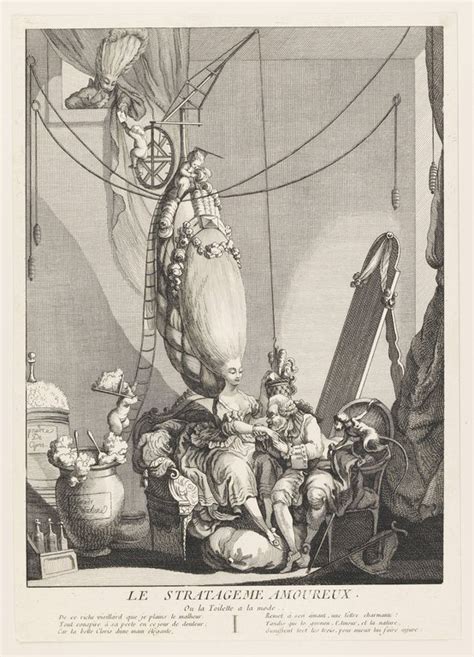Introduction
French powder wigs, an iconic symbol of the 18th century, played a pivotal role in shaping fashion and social norms of the era. These elaborate coiffures, towering atop the heads of both men and women, were a testament to the extravagant and highly stylized aesthetics of the time. In this comprehensive guide, we delve deep into the history, construction, cultural significance, and modern-day applications of these fascinating fashion artifacts.

Historical Evolution
The origins of French powder wigs can be traced back to the mid-17th century during the reign of King Louis XIV. The monarch, known for his love of elaborate fashion, began wearing a large, curled wig to conceal his receding hairline. This trend quickly caught on, and soon the wearing of wigs became a symbol of wealth and status among the French aristocracy.
By the early 18th century, French powder wigs had reached the height of their popularity. Wigs became increasingly large and complex, with intricate curls, braids, and embellishments. They were often powdered white with flour or starch, a practice that not only covered up dirt and lice but also added to their grandeur.
Construction
Creating a French powder wig was a time-consuming and laborious process that involved multiple skilled craftsmen. The wigs were typically made from human hair, either cut from the heads of willing donors or purchased from hair merchants. The hair was then sorted, curled, and shaped using a variety of tools, including curling irons, hairpins, and pomade.
Once the hair had been shaped, it was sewn onto a base made of linen, silk, or wire. The base was designed to fit snugly on the wearer’s head and provide support for the weight of the wig. The finished wig could take weeks or even months to complete, depending on its complexity.
Cultural Significance
French powder wigs played a crucial role in 18th-century society. They were a symbol of status, wealth, and refinement. The size and extravagance of one’s wig indicated their rank and social standing. Wigs also served as a way to conceal hair loss or other imperfections, making them a popular choice for both men and women.
The wearing of wigs had a profound impact on the social customs of the time. It led to the development of new etiquette rules, such as the practice of removing one’s wig when indoors or in the presence of superiors. Wigs also influenced fashion, with clothing being designed to complement the elaborate hairstyles.
Modern-Day Applications
While French powder wigs are no longer worn in everyday fashion, they have found new applications in the modern era. They have become popular as historical costumes for theater, film, and historical reenactment events. They are also used by hair stylists and wig makers as a source of inspiration for new and creative hairstyles.
In addition, the concept of a “powder wig” has been adopted into modern slang. The term is often used to describe a person who is perceived as being pompous, aloof, or out of touch with reality.
Customer Needs and Wants
Today’s consumers are looking for products that are unique, stylish, and functional. French powder wigs can meet these needs by providing a way to stand out from the crowd. They can also be used to create a variety of historical or fantasy costumes for special events.
In addition, wigs can be used to create a desired look without cutting or styling one’s own hair. This can be particularly appealing to those who want to try out a new hairstyle or those who are experiencing hair loss.
Step-by-Step Approach
To create a French powder wig, follow these steps:
- Choose a style. There are many different styles of French powder wigs, so it is important to choose one that you like and that will suit your face shape and personality.
- Gather your materials. You will need: human hair (or a wig), a wig base, a wig block, curling irons, hairpins, pomade, and starch or flour.
- Prepare the hair. Sort the hair and then curl it using curling irons.
- Shape the wig. Sew the curled hair onto the wig base. Use hairpins and pomade to secure the hair in place.
- Powder the wig. Once the wig is shaped, powder it with starch or flour.
Pros and Cons
Pros:
- Unique and stylish
- Can be used to create a variety of looks
- Can be used to conceal hair loss or imperfections
Cons:
- Time-consuming and expensive to make
- Can be difficult to maintain
- May not be suitable for everyday wear
Tables
Table 1: Types of French Powder Wigs
| Type | Description |
|---|---|
| Queue | A long, braided wig that was worn by men. |
| Peruke | A shorter, curled wig that was worn by both men and women. |
| Fontange | A tall, elaborate wig that was worn by women. |
| Cornet | A smaller, more modest wig that was worn by women. |
Table 2: Materials Used to Make French Powder Wigs
| Material | Description |
|---|---|
| Human hair | The most common material used to make French powder wigs. |
| Linen | Used to make the wig base. |
| Silk | Also used to make the wig base. |
| Wire | Used to make the wig base for more elaborate wigs. |
| Curling irons | Used to curl the hair. |
| Hairpins | Used to secure the hair in place. |
| Pomade | Used to style the hair. |
| Starch or flour | Used to powder the wig. |
Table 3: Cost of Making a French Powder Wig
| Type of Wig | Cost |
|---|---|
| Simple queue | $500-$1,000 |
| Elaborate peruke | $1,000-$2,000 |
| Complex fontange | $2,000-$3,000 |
Table 4: Maintenance of French Powder Wigs
| Type of Maintenance | Frequency |
|---|---|
| Brushing | Daily |
| Washing | Every 2-3 weeks |
| Powdering | As needed |
| Restyling | As needed |
Conclusion
French powder wigs were a defining fashion statement of the 18th century. They served as a symbol of status, wealth, and refinement, and played a significant role in the development of social customs and fashion. Today, French powder wigs continue to inspire creativity and innovation, finding new applications in the realms of historical reenactment, costume design, and modern-day fashion.
